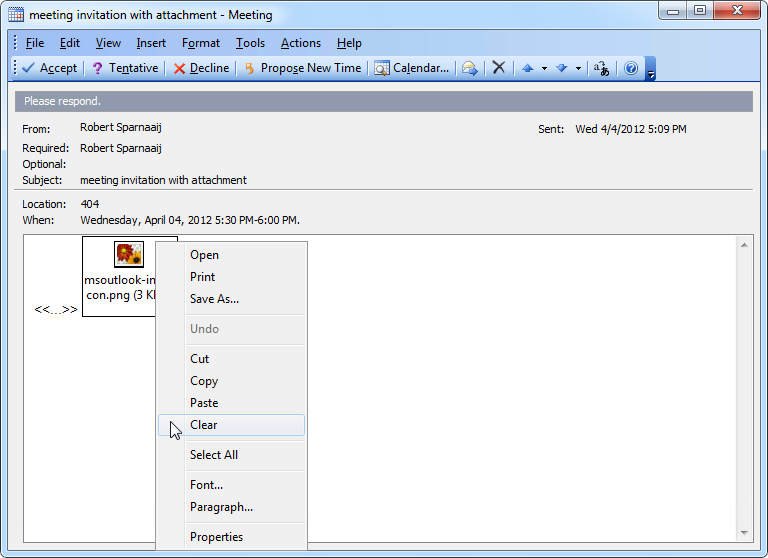
#Outlook automatically accept meeting how to
To learn how to connect to Exchange Online PowerShell, see Connect to Exchange Online PowerShell.įor information about keyboard shortcuts that may apply to the procedures in this article, see Keyboard shortcuts for the Exchange admin center. The designated accounts for sending Direct to Calendar meeting invitations need to exist.įor more information about opening and using the Exchange admin center (EAC), see Exchange admin center in Exchange Online.

To see what permissions you need, see the "Mail flow" entry in the Feature permissions in Exchange Online article. You need to be assigned permissions before you can perform this procedure or procedures. What do you need to know before you begin? Note that this rule doesn't prevent meeting cancellation messages for Direct to Calendar meetings from appearing in the Inbox of recipients.įor more information about mail flow rules, see Mail flow rules (transport rules) in Exchange Online. Technically, this rule is optional (without it, meetings are still automatically added to recipient calendars). This action sets the X-MS-Exchange-Organization-CalendarBooking-TriageAction header to the value MoveToDeletedItems. This mail flow rule prevents Direct to Calendar meeting invitations from appearing in the Inbox of recipients. The dedicated mailboxes require no special permissions to send Direct to Calendar meeting invitations.

We recommend that you use dedicated mailboxes (shared mailboxes are OK) for sending Direct to Calendar meeting invitations, because any meeting invitations from these senders will be automatically added to recipient calendars. Other valid values are Tentative and Decline. This action sets the X-MS-Exchange-Organization-CalendarBooking-Response header to the value Accept. Set the message header to this value or Modify the message properties > set a message header (the SetHeaderName and SetHeaderValue parameters). Although you can use other conditions, restricting the invitations by sender helps prevent unauthorized use of Direct to Calendar meeting invitations. This condition identifies the users who are authorized to send Direct to Calendar meeting invitations.

The sender is or The sender > is this person (the From parameter). This mail flow rule turns regular meeting invitations into Direct to Calendar meeting invitations. These rules are described in the following table:

With the Direct to Calendar feature in Exchange Online, admins can configure mail flow rules (also known as transport rules) that allow designated users to add meetings to calendars. This article does not apply to standalone Exchange Online Protection (EOP) organizations.


 0 kommentar(er)
0 kommentar(er)
